How Do Car Brakes Work?
Car Brakes are a bit of an unsung hero on most vehicles.
We don’t really talk about them or boast about them like we do acceleration, top speed, or handling – but in truth, they’re every bit as important as even the most impressive car performance figures.
Not convinced? Well, the fact is, they probably saved your life a hundred times over the last time you drove – so you might want to stop taking them for granted and tell them you appreciate them the next time you see them.
Flowers probably aren’t necessary – but maybe you should get to know them a little better.
This is where we can help.
In this quick guide, we’re going to walk you through everything you need to know about the brakes on your car – and, when we’re finished, you’ll be able to understand what a mechanic’s talking about if you ever need a brake service or brake repairs.
How does a braking system work?
When you apply the brakes, there’s actually a lot that happens within your brake system before your car starts to slow.
It’s a quick process – but there are lots of braking system components involved.
Let’s take a look at each of them:
The brake pedal
Since the brake pedal is the only part of the system we interact with, this is a good place to start.
When you push your brake, you actually activate something called the ‘master cylinder’. Think of this as a brake amplifier – it takes the force you’ve applied to the pedal with your foot and multiplies it thousands of times, because – frankly – putting your foot on a brake disc wouldn’t be much use.
The master cylinder can increase the force through the system thanks – essentially – to brake fluid and a piston. As you press the pedal, the master cylinder converts the pedal movement into hydraulic force through the pipes and calipers.
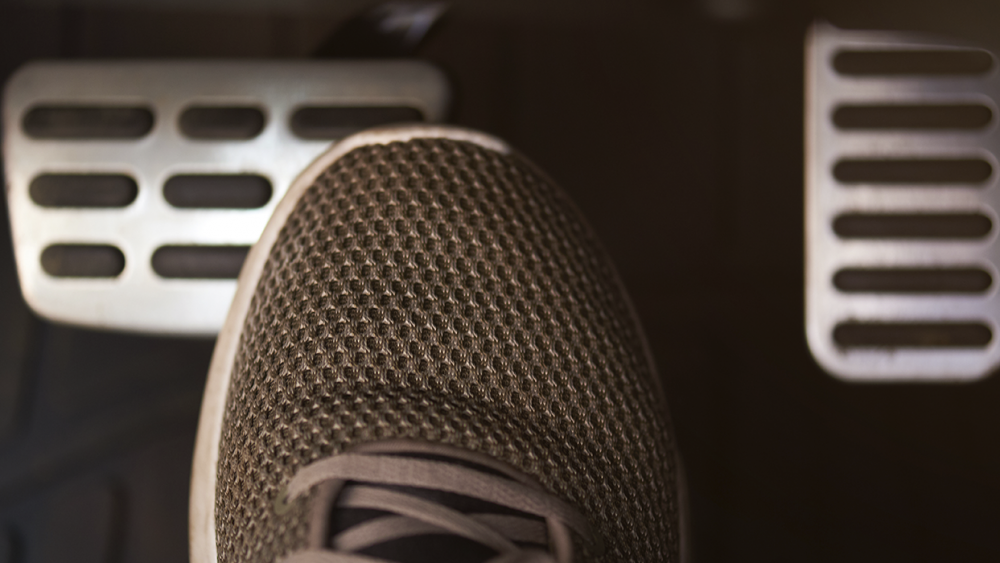
Anti-lock brakes
We’re going to be really honest with you now and tell you something you might find difficult to hear:
Your car doesn’t trust you.
And it’s right not to. As humans, we’re not very good at braking – and it’s mostly because we can’t react quick enough if something goes wrong when we push the pedal.
Let’s say you hit a greasy patch of road – or slide on ice. Chances are unless you’re a professional rally driver, we panic slightly; push the brake harder; then hear a crunching of bumper plastic as your car connects with something it shouldn’t.
This is why ABS was invented – or, an ‘Anti-Lock Braking System’ to give it its full name.
ABS is tied into your car’s ECU (engine control unit) – the computer system that controls all the electrical systems in your vehicle. Wheels locking up when you brake is bad news because it causes your car to skid – so, the ABS system can sense when your wheels stop turning, ease off the brakes, then apply them again quickly so you come to a controlled stop – rather than slide. Most modern ABS systems can apply the brakes hundreds of times in a second to stop the wheels from locking up – which is about 100 times quicker than most people can!
https://www.youtube.com/watch?v=mKiTAcXK6M4&t=227s
Brake lines
Brakes lines – or pipes – are the part of the system which connects the master cylinder to the rest of the disc brake system. These slim pipes contain brake fluid that is pushed at high pressure through the system to force the brake pads against the disc brake.
There’s not much ‘tolerance’ in a brake system – which really means the difference between your brakes being ‘on’ or ‘off’ isn’t very much. This means there’s not much room for error when it comes to brake fluid levels – so you’ll find it’s something that is checked at every service.
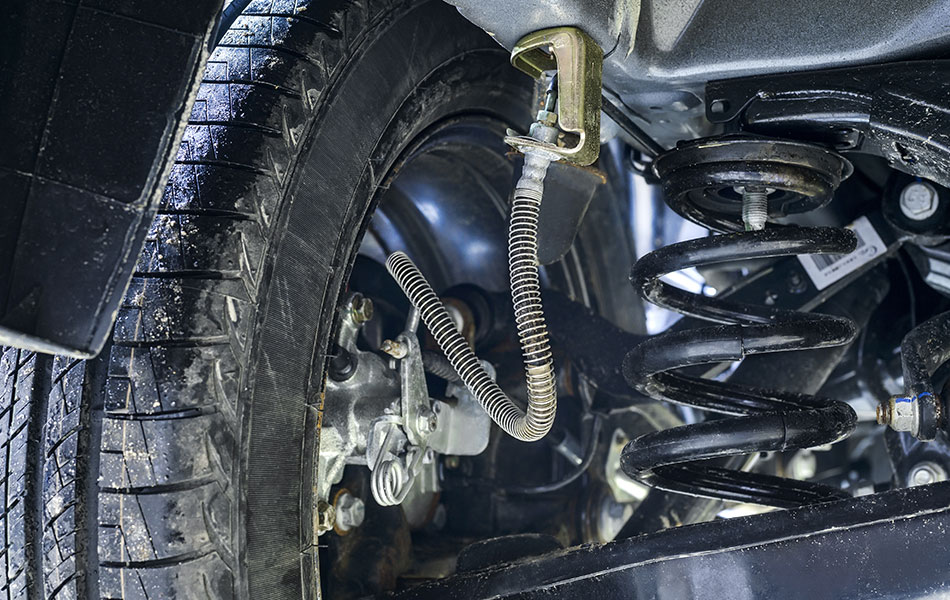
Brake callipers
Brake calipers are a part of the braking system that sits behind each wheel on your vehicle. At a glance, it looks like a chunky clamp that wraps around each of the disc brakes.
The caliper is where all the action happens.
Inside the caliper, there’s a series of small cylinders (sometimes called ‘pots’ or ‘pistons’) on each side of the disc. These cylinders sit behind brake pads – which are facing the rotor. Each cylinder full of brake fluid – and when pressure comes through the brake pipes, the amount of fluid in these cylinders increases, pushing the brake pads against the rotor.
A lot of vehicles have ‘four-pot’ brake calipers (two on either side of the disc) – but bigger, heavier, or faster vehicles often have more, to increase the force and friction between brake and pad when the car brakes are needed.
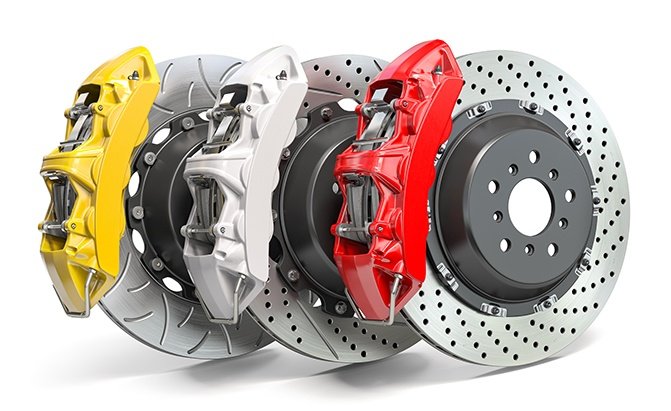
Brake pads
All that amplified pressure that comes through your brake system means nothing without some serious friction to stop your discs turning – and friction is the name of the game when it comes to brake pads.
These tough little pads get shoved against the metal disc brake at all speeds – so they take some serious abuse. Different pads are made of slightly different materials – but most car manufacturers spec their vehicles with semi-metallic pads; a blend ultra-fine shavings of copper, steel, graphite, and steel – set in an ultra-tough resin.
There are organic pads products too – which are made of materials like Kevlar, glass, and rubber. This type of pad is generally more environmentally friendly – although they’re not as long-lasting as metallic alternatives.
However, If you’re looking for ultra-high-performance, ceramic pads are really the ultimate – but they’re generally very expensive. Ceramic brake pads work very well in high temperatures – making them ideal for sports and race cars. The cost? Well, on a brand new Porsche 911, ceramic pads and discs will add around $18,000 to your shopping cart!
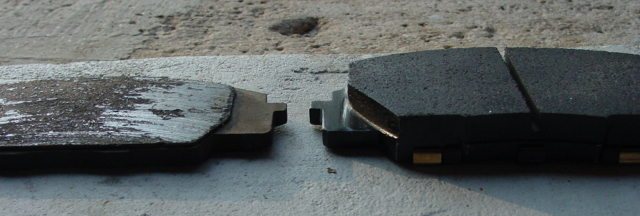
Brake discs (also known as ‘brake rotors’)
All that pressure and friction generated by braking systems needs something to grab – and that’s where the actual disc part of the setup comes into play.
The disc – or ‘brake rotor’ – is attached to your car’s axel and spins at the same speed as the wheel. When it’s time to stop, each brake pad effectively grabs this disc from both sides.
As you can imagine, discs need extremely hard-wearing to deal with the kind of friction and heat that comes their way – so they’re often made of ultra-tough cast iron. Of course, there are performance options – made of carbon and ceramic composites – but these are big-money options generally reserved for high-performance vehicles.
Discs sometimes have a flat, polished face that the brake pad touches – but sometimes, they’re drilled or grooved to prevent overheating.
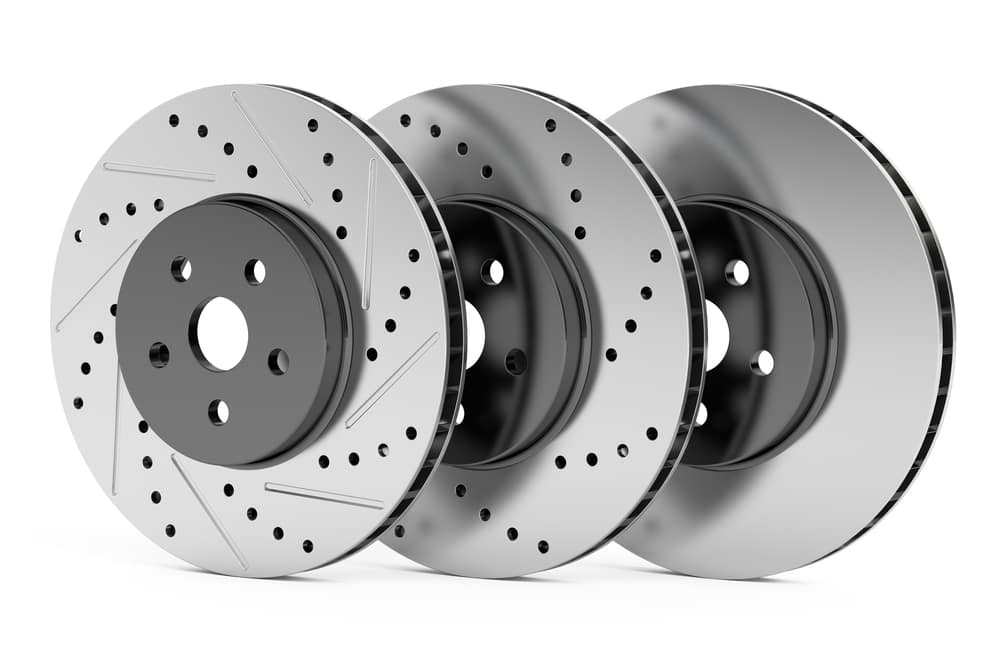
What about drum brakes?
So far, we’ve only really talked about disc brakes.
Most modern cars tend to have disc brakes – at least on the front wheels (where most of the stopping force is required). However, you will find drum brakes on some older cars – or on the back wheels of some more cost-effective vehicles.
Instead of pushing brake pads against the outside of a disc, a drum brake has ‘brake shoes’ which sit inside wheel cylinders behind each wheel. Hydraulic force pushes each brake shoe outwards – applying friction to the inside of the wheel cylinder or ‘brake drum’.
Like disc brake pads, brake shoes are tough items – made of iron and several alloys on a steel backing plate.
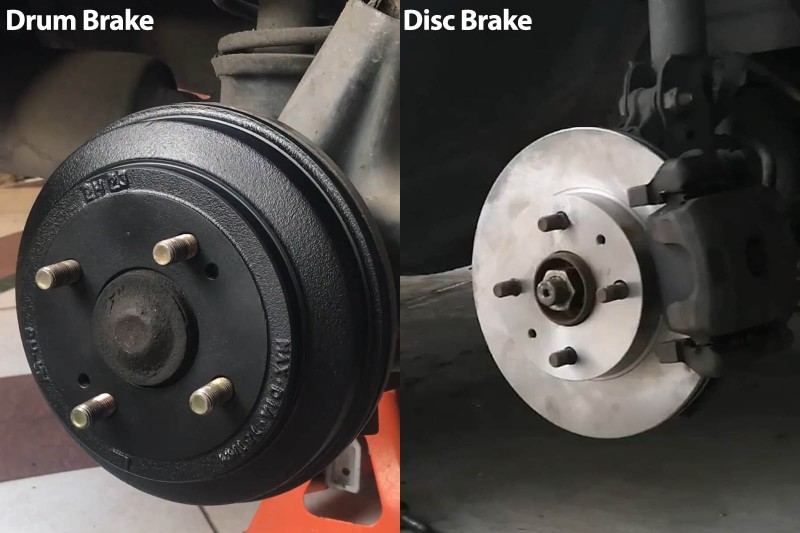
Handbrakes
Want to make sure your car stays where you left it?
For that, you’re going to need a handbrake.
Sometimes referred to as a ‘parking brake’ or ’emergency brake’ – a hand brake isn’t for use when you’re driving – instead, it locks the back wheels when you’re stationary.
Generally, parking brakes are a lever that puts tension on a cable – which in turn causes the discs or drums to tighten, so the car can’t move. However, in some more-modern vehicles, an electric handbrake is effectively a switch that uses a motor to electronically apply the rear brakes.
Obviously, the downside of an electronic handbrake is the fact that you can’t use it to do handbrake turns (not that we’d suggest that anyway…) – but they do tend to be more reliable than cable-operated handbrakes, even if they’re not as much fun.
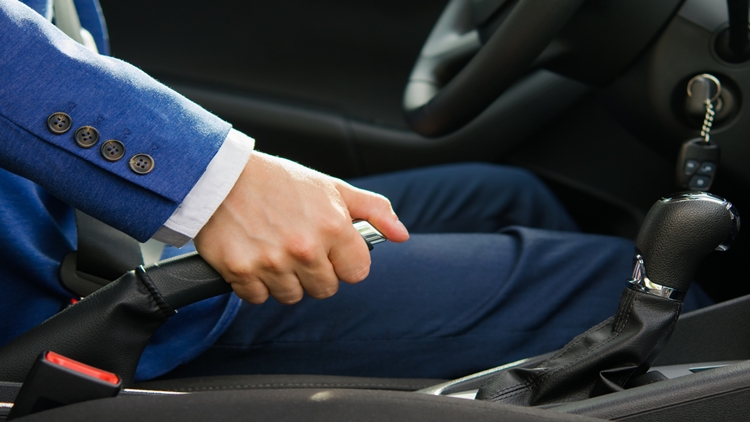
Need some help with your Car’s brakes?
There’s no other way of cutting it – brakes literally are life or death – so if you think something’s not quite right, get it looked at immediately.
This is where we can help. When you use Auto Hero to get quotes from local mechanics and brake specialists, we’ll put you in touch with trustworthy local businesses that are eager for your business. You don’t have to worry about unnecessary costs or work – just clear information, great service, and brakes that do what they’re supposed to!
To search for a trustworthy local mechanic, click here:
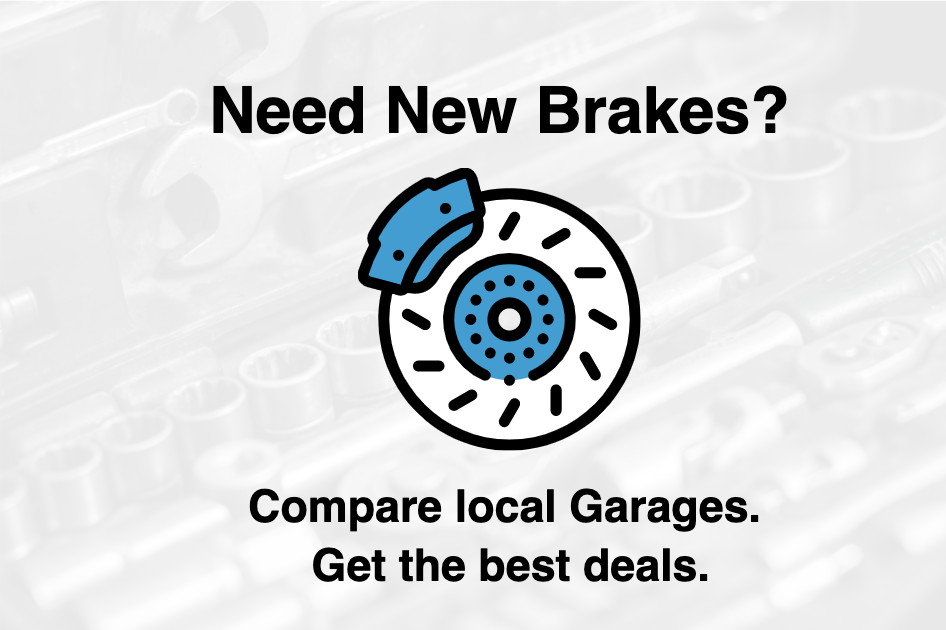
Hi Matt , first time I’ve been to your site for a while, so many great updates & changes , I love the new layout & informitive advice. Kaz needs some new tyres for her Golf so I will push on.